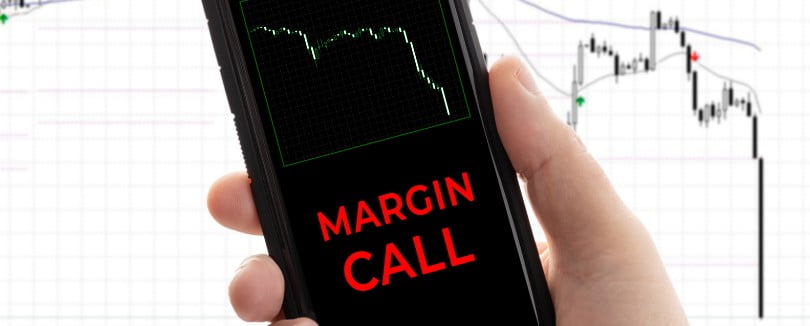CFD, which stands for Contract for Difference, is a type of derivative that can be based on various financial markets. CFD trading is known for its high leverage and small trading sizes, allowing traders to access global markets, including stocks, futures, Forex, gold, crude oil, and crypto, with a margin requirement as low as $1.
What is CFD Trading
CFD trading enables traders to speculate on various financial instruments without actually opening a position in the underlying market, thereby saving on delivery and clearing costs. The term “contract for difference” derives from the settlement method used in CFD trading, where transactions are settled in cash based on the difference between the open and close prices.
Originating from the city of London in the early 1990s, CFDs were originally used by financial institutions in the UK stock market to avoid the stamp duty levied during the process of share delivery.
For example, Institution A plans to open a long position on Barclays, while Institutional B seeks to open a short position. A and B enter into a private contract to act as counterparties to each other in the trading of Barclays stock. The underlying asset in this trade is the stock price of Barclays itself, rather than the actual Barclays stock, allowing both parties to avoid paying any stamp duty.
As the internet gained popularity in the late 1990s, CFD trading became increasingly popular among individual traders. It has since evolved into a widely-used investment method, enabling individuals to trade various financial instruments worldwide.
Underlying Market & Pricing
Every CFD is linked to an underlying market from which it derives its pricing. In the example from the previous chapter, the contract entered into by A and B pertains to the price movement of Barclays stock.
While the CFD mirrors the price movements of the underlying market, it’s crucial to acknowledge that due to the over-the-counter (OTC) nature of trading, there may be slight variations in CFD pricing among different providers. Below is the formula for CFD pricing:
CFD pricing = Pricing of underlying market + Fair value
Fair value, a concept in accounting, implies that CFD pricing will closely align or be identical to the pricing of the underlying market. However, variations in pricing may occur among different CFD providers.For instance, in the example from the previous chapter, assuming the actual Barclays stock is traded at £15.10:
- The trading price between A and B could be £15.09, as there are no stock delivery and clearing fees involved.
- If B trades with a smaller institutional C, the price might increase to £15.12, compensating for the higher counterparty risk.
Types of CFD Trading
While all financial instruments can be represented as CFDs, there are four common categories of CFD trading for individual traders, as listed below:
1). Forex CFD Trading
The popular leveraged Forex trading is, in fact, a form of CFD trading. Undoubtedly, Forex CFD trading is the most popular type of CFD trading, gaining traction among individual traders in many countries.
In Forex CFD trading, the spot Forex price serves as the underlying asset. Traders can trade dozens of currencies without physically exchanging currency with a bank.
3). Index CFD trading
Index CFDs, particularly stock index CFDs like Dow Jones CFD, S&P500 CFD, and Nasdaq CFD, are even more popular than Forex CFD trading in some regions, owing to the extensive media coverage of stock indices.
Similar to commodity CFDs, there are spot index CFDs and index futures CFDs. Additionally, other indices such as USDINDEX and VIX are also highly sought-after CFDs.
2). Commodity CFDs
Commodity CFDs, such as Gold CFD and Brent CFD, are highly popular among individual traders. There are two sub-types of commodity CFDs, such as gold spot CFD and gold futures CFD.
The underlying market for gold spot CFD is spot gold (London gold), whereas the underlying market for gold futures CFD is the gold futures traded on COMEX.
4). Crypto CFD trading
As today’s hottest finance asset class, cryptos can also be traded via CFDs. In fact, all contract trading on crypto exchanges is CFD trading, with the spot crypto serving as the underlying market.
In addition to crypto exchanges, many CFD brokers also offer crypto CFD trading, providing access to a wide range of popular cryptos including BTC and ETH.
Regulation of CFD Trading
1). Reason of CFD Regulation
In the example presented in the first chapter, the relationship between institutions A and B mirrors that of reputable entities like Barclays and HSBC, both of which boast solid reputations and creditworthiness. Consequently, they can engage in trading with each other, minimizing counterparty risk.
However, in the retail trading market, individuals lack the means to establish a credit market for trading among themselves. Therefore, the role of CFD brokers becomes essential. Nevertheless, two critical questions remain unanswered:
- How can CFD brokers ensure fair treatment of traders and honor payments when traders make a profit?
- How can individual traders be prevented from defaulting when they incur losses?
The counterparty risk associated with individual traders can be mitigated through margin requirements and force liquidation rules. Conversely, addressing the counterparty risk of CFD brokers requires regulatory oversight.
To offer CFD trading services to retail traders, CFD brokers must obtain licenses from monetary regulators, adhering to various regulatory requirements such as capital adequacy, risk management protocols, and segregation of client funds.
2). Regulation in Different Countries
The regulations for retail CFD trading vary significantly among different countries/regions:
CFD Regulation in Europe
As the birthplace of CFD trading, European countries maintain an open attitude, permitting retail traders to participate in CFD trading.
CFD Regulation in the USA
With the exception of leveraged Forex trading, all other forms of CFD trading are prohibited from being offered to US citizens by law.
The history of CFD trading in the Asian region is not as long as that in Europe. Except for Japan, Singapore, Hong Kong, and Taiwan, most other Asian countries have not yet included CFD trading in their monetary regulation.
In developed regions like Europe and Australia, CFD trading is highly regulated, given its decades-long development. However, in many developing countries, traders often opt to trade with EU/AU CFD brokers, since there are no locally regulated CFD brokers available.
3). CFD Trading Offshore Regulation
Since 2010, due to many retail traders experiencing losses in CFD trading, regulators in developed countries began imposing restrictions on the highest leverage that can be offered to retail traders. Now, all regulators in developed countries, including the Hong Kong SFC, Taiwan Monetary Authority, and Singapore MAS, have implemented these restrictions, typically capping leverage at 30x.
However, there remains a strong demand for trading with high leverage in the market. As a result, many CFD brokers have established offshore regulated entities in offshore islands such as British Virgin Islands and Bermuda, offering high leverage trading services for traders who desire it.
Benefits of CFD Trading
When compared to traditional finance trading, the advantages of CFDs are evident in the following four aspects:
1). Low Trading Threshold
Many financial markets used to be accessible only to institutional participants. The emergence of CFDs has made these markets accessible to retail traders. The WTI spot market is a good example, historically limited to industrial companies. However, with WTI CFDs, individual traders can now participate in WTI spot trading.
2). Flexible Trading Size
Let’s take Forex trading as an example. Traditionally, the minimum trading size was 1 lot, representing 100K base currency. With the introduction of Forex CFD trading, many CFD brokers now offer minimum sizes of 0.01 lots or even 0.001 lots. This allows individual traders to participate in Forex trading with a much smaller margin.
3). Long or Short at Will
In some traditional finance markets, there are limitations on opening short positions during bear markets, with certain restrictions often imposed. For example, in many countries, investors must meet specific capital and trading experience requirements to short sell in the stock market. However, in CFD trading, there are no such requirements for opening short positions, it is as convenient as opening long positions.
4). High Leverage
CFD trading is characterized by high leverage. While the stock or futures market commonly offers leverage ranging from 5x to 20x, CFDs can provide leverage of more than 100x or even 1000x. Taking the common example of 500x leverage, this means that traders can open a position valued at $500 for every $1 margin, significantly reducing the margin requirement. While high leverage is one of the most attractive features of CFD trading, it is also the most controversial aspect.
Risk in CFD Trading
The primary risk of CFD trading lies in the high leverage, which is why many regulators impose restrictions on leverage. A leverage of 100x is quite common in CFD trading, and leverage of 1000x is not uncommon.
While high leverage significantly reduces the trading threshold, enabling individuals to participate in various financial markets, it also amplifies both potential profits and potential losses proportionally. Traders may incur rapid losses if the market moves unfavorably. In cases of over-leveraging, even a small fluctuation could result in the loss of the entire capital.
For traders seeking stable returns with a low-risk preference, CFD trading may not be suitable. To learn more about the risks associated with high leverage, please refer to another article titled 「What is Leverage in Trading? Unlocking Leveraged Trading」.
CFD Trading Example
We will illustrate how CFD trading works with two examples using the most popular Gold CFD trading, both examples featuring a leverage of 500x:
CFD Trading Example – Going long on Gold
Buy 100 ounces gold when the market is traded at $2000
Margin for 100 ounces gold = (2000*100)/500=$400, meaning we can open a gold position valued at $200K with margin of $400.
We decide to take profit when gold price goes up to $2100
Trading PnL = (2100-2000)*100 ounces=$10K
CFD Trading Example – Going short on Gold
Sell 100 ounces gold when the market is traded at $2100
Margin for 100 ounces gold = (2100*100)/500=$420, meaning we can open a gold position valued at $210K with margin of $420.
we decide to cut the loss when gold price drops to $2050
Trading PnL = (2100-2050)*100 ounces= – $5K
From the two examples above, we can see that high leverage significantly reduces the trading threshold, thereby increasing both the potential profit and potential loss proportionally. With a small capital of $400, the generated PnL can amount to several thousand dollars or more.
For more details on gold CFD trading, click to read another article titled 「Trade Gold with $1 Margin: Exploring CFDs on Gold」.




